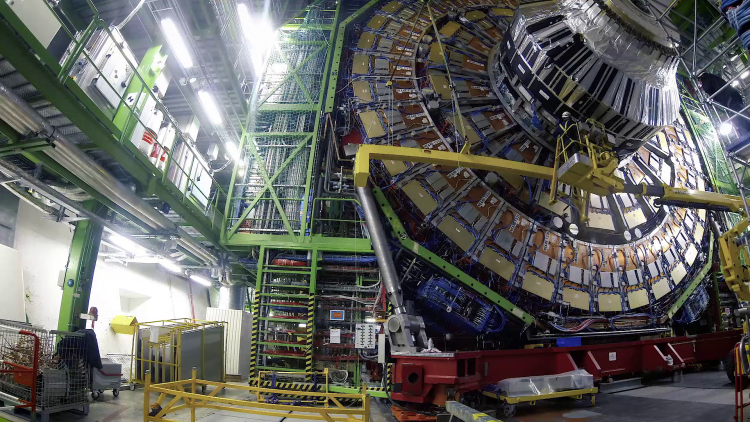
As part of the LHC Long Shutdown 2 (LS2) activities at CMS, the CMS Muon Cathode Strip Chamber (CSC) subsystem is having its electronics upgraded in the chambers closest to the beam line. This is done in anticipation of challenges it will face when the LHC reaches the High Luminosity phase.
An international team of 40 physicists and engineers, a large fraction of whom are graduate students, from CMS collaborating Institutes, are participating in this project both at CERN and abroad (US and Russia).
180 CSC muon chambers (out of a total of 540) are being removed from the CMS endcap iron disks to which they are attached and brought to surface. There they are being refurbished in a specially equipped area, after which they undergo a multi-step validation procedure. Finally, the newly upgraded CSCs are lowered into the CMS underground cavern and are reinstalled on the disks in their original position. This endeavour started in March 2019 and will last for about 15 months, until the summer of 2020. The 36 CSC chambers (ME-1/1) of the negative disk closest to the interaction point have already been fully refurbished, reinstalled and commissioned.
The video shows the preparation of the CSC detectors before they are removed from the disk and the process of chamber extraction, using specially designed fixtures, and the transport to the refurbishment area. This process is very time-consuming and requires a high degree of specialized training for the personnel. Since the CSCs are mounted on huge (16m diameter) disk surfaces, the use of elevating platforms is required to reach the detectors and perform preparatory steps prior to their extraction. The size and weight of the CSCs varies depending on their location in the CMS apparatus. The smallest chambers (shown in the video) are about 1.7m long and weigh close to 120kg. This puts specific requirements on the preparation and extraction tools used, and on the handling procedures.
- Log in to post comments

